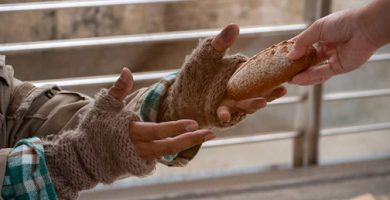What is flexibility?
We explain what is the flexibility in physical education, muscle flexibility and the types that exist. In addition, labor flexibility.
-
What is flexibility?
According to the dictionary of the Royal Spanish Academy, being flexible means having “… willingness to bend easily” and being “… susceptible to changes or variations according to circumstances or needs.” In other words, flexibility is the condition of those things, people or ideas that, instead of being rigid or strict, are relatively adaptable to change.
Thus, when something has flexibility, we know that it can undergo a certain margin of change, whether or not it recovers its original form. This is valid for certain materials, which can be bent, such as wire; or stretch, like rubber.
It is also a term used to describe people, both physically or mentally: a yoga practitioner will exhibit a lot of physical flexibility, and a tolerant person will have a lot of emotional flexibility, to name an example.
Flexibility should not be confused with similar concepts, such as elasticity , which always implies a return to the original position or form; nor to that of malleability, which suggests that the form of something can be modified at will permanently.
Similarly, this term is used to refer to other situations and conditions in which flexibility is not literal, but figurative: a flexible schedule, flexible dates, a flexible assignment, etc.
-
Flexibility in physical education
In the field of sports and physical education , flexibility is understood as the ability of the joints of the human body to carry out movements with great amplitude , that is, to allow certain movements to deform without suffering injuries or breakages.
Thus, a person with greater flexibility can subject their body to postures and positions without suffering pain or physical limitations, while another slightly flexible will show more stiffness and difficulty for certain movements.
Flexibility is a physical capacity, and like many others it can be developed through training and constant exercise. For example, activities like yoga stimulate it.
In fact, a pre-exercise stretch is necessary as a way to heat the joints and allow them a greater range of flexibility, thus decreasing the chances of physical injury.
-
Types of muscle flexibility

Flexibility depends directly on the joints and muscles . It also plays a role in muscle fatigue, ambient temperature (and muscle temperature ), and the age of the individual (the older, the less flexible). But in general, flexibility can be of two types: active or passive.
- Active flexibility . The maximum amplitude of a joint or movement that a person can carry out by his own will, through the contraction and distension of the muscles.
- Passive flexibility . The maximum amplitude of a joint or movement that a person’s body can achieve, subjected to external forces or the help of an exercise partner.
-
Labor flexibility
In administration , labor flexibility refers to labor dynamics or formal work. In this area, labor flexibility is deregulation or liberalization of the labor market , ie, restrictions or limitations are removed to hiring or laying off employees by the companies public or private in a country.
Labor flexibility is usually announced by the State , usually in situations where the need to grow the corporate sector is pressing. It usually applies for a certain period of time, as this flexibility can go against social or labor achievements earned through trade union struggle. Thus, it can be two types of flexibility:
- Flexibility of employment , when employers are given a white letter to hire or fire staff without too many legal obstacles from the State.
- Salary flexibility , when the modification of wages paid to workers is allowed , according to market pressures.




